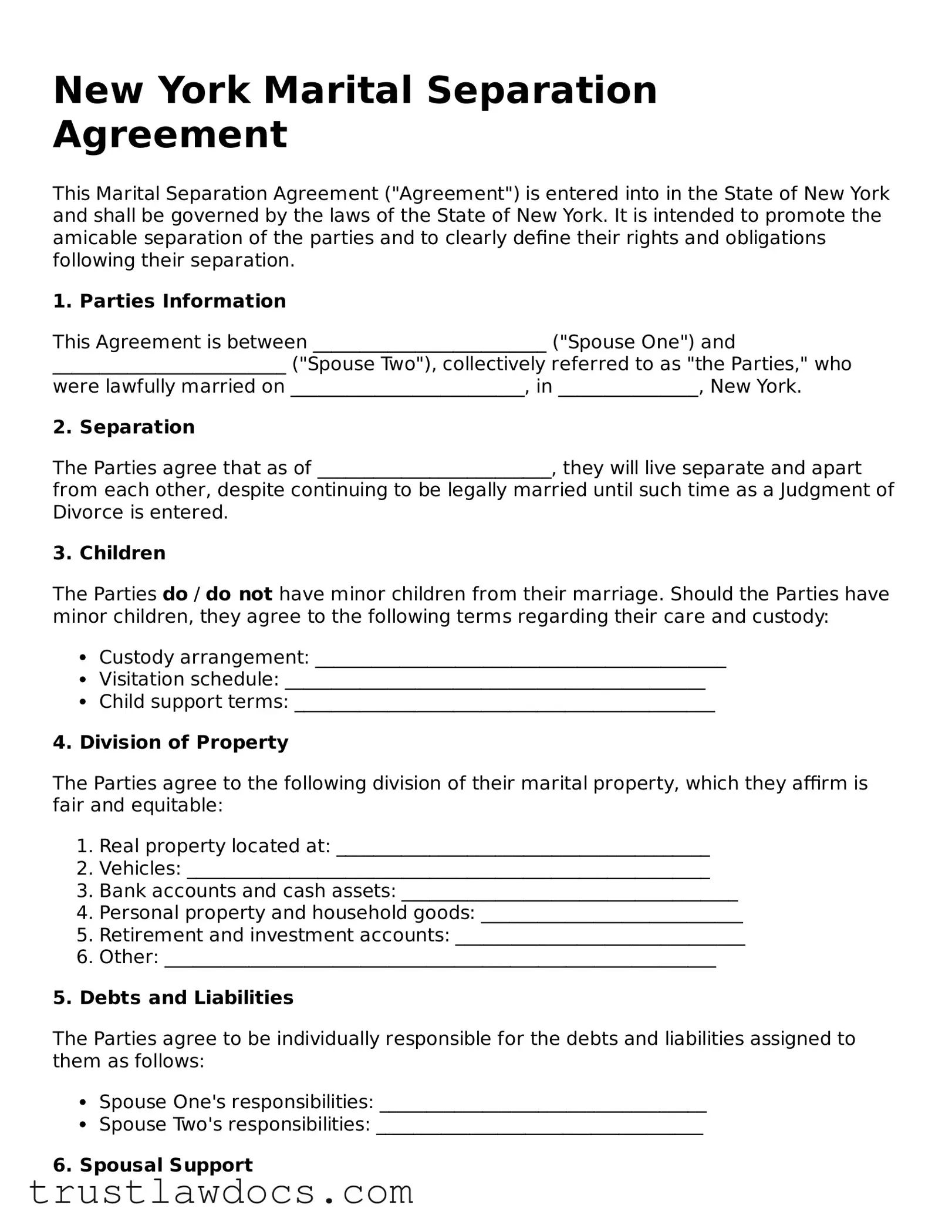New York Marital Separation Agreement
This Marital Separation Agreement ("Agreement") is entered into in the State of New York and shall be governed by the laws of the State of New York. It is intended to promote the amicable separation of the parties and to clearly define their rights and obligations following their separation.
1. Parties Information
This Agreement is between _________________________ ("Spouse One") and _________________________ ("Spouse Two"), collectively referred to as "the Parties," who were lawfully married on _________________________, in _______________, New York.
2. Separation
The Parties agree that as of _________________________, they will live separate and apart from each other, despite continuing to be legally married until such time as a Judgment of Divorce is entered.
3. Children
The Parties do / do not have minor children from their marriage. Should the Parties have minor children, they agree to the following terms regarding their care and custody:
- Custody arrangement: ____________________________________________
- Visitation schedule: _____________________________________________
- Child support terms: _____________________________________________
4. Division of Property
The Parties agree to the following division of their marital property, which they affirm is fair and equitable:
- Real property located at: ________________________________________
- Vehicles: ________________________________________________________
- Bank accounts and cash assets: ____________________________________
- Personal property and household goods: ____________________________
- Retirement and investment accounts: _______________________________
- Other: ___________________________________________________________
5. Debts and Liabilities
The Parties agree to be individually responsible for the debts and liabilities assigned to them as follows:
- Spouse One's responsibilities: ___________________________________
- Spouse Two's responsibilities: ___________________________________
6. Spousal Support
Following the separation, Spouse One shall / shall not provide spousal support to Spouse Two. The terms of the support are as follows:
Amount: $________________________ per month for a term of ___________ years/months, commencing on _________________________.
7. Entire Agreement
This Agreement contains the entire agreement between the Parties regarding their separation and supersedes any prior understandings, agreements, or representations. Any amendments or modifications to this Agreement must be in writing and signed by both Parties.
8. Legal and Voluntary Agreement
The Parties affirm that they have entered into this Agreement voluntarily, without any coercion or undue influence, and have had the opportunity to seek the advice of independent legal counsel.
9. Signature
In witness whereof, the Parties have executed this Agreement as of the date first written above.
Spouse One: ___________________________ Date: _________________________
Spouse Two: ___________________________ Date: _________________________
